Even if we’re not in the 1%, lots of us still benefit every day from policies that burden the less financially fortunate.
I’m not in the 1%. At the lower end of what I think of as the upper middle class, I nevertheless take daily advantage of a raft of systems intended to ensure that people who have less money than I do pay more than I do. Since my economic advantages result from public policy, it’s fair to call them taxes, levied on people least able to afford them and applied upward for the benefit of people like me. Since the glory days of feudalism are long over, and we don’t like to revel in high position, matters are arranged to keep me and people like me from noticing the systemic nature of our economic advantage. 
Here, therefore, are four quotidian things we deal with half-consciously every day that move money upward and keep it there:
1. ATM’s. Some readers have reason to think the lowest amount that can be withdrawn from an ATM is a twenty-dollar bill. Others have reason to know that in less privileged parts of town, ATM companies set the machines to dispense ten-dollar bills, with ads calling attention to the fact. The reason is fairly obvious: many people’s balances and obligations don’t permit them to withdraw $20 at one time, and ATM companies and storeowners don’t want to miss out on collecting fees in such a large — and these days, and in those neighborhoods, such a growing — population.
The up-front fee for withdrawing $10 is the same as the up-front fee for withdrawing other amounts. That gives me a distinct, recurring financial advantage over less well-off neighbors. This morning, for example, on my way to the subway, I withdrew $120 at a local ATM, paying $1.75 on the transaction — around 1.5%, a reasonable fee for the convenience. I usually take out as much cash as I can when using an ATM not at my bank. It saves money. And if I keep a certain balance in my account, I pay no transaction fee to my own bank for using the ATM.
An up-against-it neighbor, by contrast, made a ten-dollar withdrawal, paying the $1.75 fee too. Where my cost was less than 2%, his was 17.5%. If his bank account is less “preferred” than mine, he’s paying his bank a fee on the transaction too, a fee not announced at the ATM. The act of taking out cash costs him proportionally more than ten times what it costs me, and possibly far more. Because I can afford it, my money is cheap to get. Because he can’t, his is expensive.
Changing that situation would require a law changing how ATM fees work. That law’s nonexistence is an act of financial-regulation policy. I’m not in the 1%, but that famous — or infamous — banking-government connection is operating to my financial benefit.
2. Subway Cards. My pockets full of cheaply accessed folding money, I proceeded this morning to the subway station to buy a MetroCard, which is how we pay for public-transportation in New York City. When you put more than $10 on a MetroCard, you receive a 7% bonus. I put $80 on the card, the maximum. That way I get what I think of as two free rides, plus part of another one.
The fantasy that I’m getting nearly three free rides, on top of 35.5 rides that I think I purchased for $80, is predicated on the false premise, advertised by the Metropolitan Transit Association, that subway fare is $2.25 per ride. In reality, the fare is capped at $2.25 per ride for a round trip — but it isn’t set there. Nothing’s free: the fare per ride varies, of course, depending on how much you put on the card.
Fares go down for those who can afford more, up for those who can afford less. If you can afford only a round-trip card, your fare will indeed be $2.25 each way. If you put a large amount on the card — and, a key consideration, if you can tolerate the concomitant risk of losing that card — you can get your subway fare down to about $2.00 per ride.
In other words, after some hasty scribbling, I find that a 7% bonus for those with the most to spend equates with a 12.5% extra charge for those with the least. The rationale for this policy, I think, is that the bonus “incentivizes” me to use public transportation (though not being in the 1%, I have no helicopter), to keep living in the city, to support the tax base, etc. Various choices I’m described as enjoying make me eligible, as a matter of public policy, for programmatic benefits not granted those with fewer choices.
I know there are reduced-fare subway programs, which, along with other relief programs like food stamps, give people with fewer resources ways of getting easier terms on essential goods and services. You have to apply for such government programs, and at first glance that seems natural enough. Yet the program I’m in, every bit as much a government program as the relief one — the program that charges poorer people to benefit me — requires no application.
3. American Express. When I was buying that MetroCard this morning, I decided not to use the cash I was lucky enough to withdraw from my ATM at such a comparatively low discount. I used my American Express card instead.
Many of us who are not in the 1% have American Express cards. They cost money to own, since the financial advantages of owning them are tangible. My neighbor — the same one who withdrew money from the ATM at more than ten times my cost, and then spent 12.5% more per subway ride than I did — had to take the money to pay for his MetroCard out of his pocket, or out of his bank account via debit, right there at the point of purchase. 
But no money came out of my pocket or account when I bought my MetroCard. That money won’t leave my virtual coffers until I get the AmEX bill and get around to paying it, and until my check then clears. So if my money is in a money market, for example, it’s actually making me yet more money while my AmEx bill waits to be paid. The “float” on my single MetroCard purchase may be negligible — but the more times and ways I postpone payment this way, the more money I keep, in the short term, to grow for the long term.
Plus I am “awarded” “points” by American Express for every dollar I’ve thus postponed spending. That makes it cheaper for me than for those who can’t afford the card to fly in a plane, to rent a car, etc. Membership has its privileges: nonmembers paying more.
And AmEx is a service I pay for, not a line of high-interest credit I access. Should that neighbor of mine, when buying his MetroCard, decide he needs to hold onto his expensive cash withdrawal, and not further lower his precarious balance via debit, and should he therefore use a credit card for his subway ride, he will pay up to another 20% more on the subway fare than I do.
4. Sales and Sin Taxes. As the MetroCard bonus is framed not as a tax on those who can’t afford it but as a benefit for those who can, sales taxes and sin taxes go the other way: they admit to being taxes, but they don’t admit to being overwhelmingly for the benefit of the better-off.
Sales tax is a “flat” tax, like the ATM fee, notoriously regressive. Government’s dunning the buyer of a $60 pair of jeans with a 5% sales tax, say, regardless of whether the buyer makes $20,000 or $2,000,0000 per year, places a disproportionately greater responsibility on the poorer buyer for contributing to the public revenue. In New York, therefore, the state doesn’t tax the purchase of essential items like clothing priced under $55. And the same percentage is charged for a $60 or a $600 pair of jeans — so the person who can afford a more expensive pair does therefore pay more. You have to be buying something like a yacht to see the rate itself go up, and not being in the 1%, I’m not buying one of those. Sales taxes thus benefit me in ways not immediately obvious when paying them.
The tobacco excise, too – a “sin” tax — should be seen as a regressive tax that masquerades as something else. The tobacco excise comes cloaked in concern for the health and welfare of smokers: the tax is rationalized as a disincentive, in this case, from doing something bad for health.
But in New York City, the price of a pack of cigarettes can exceed $15.00, and New York State collected $10 billion in tobacco taxes over the last six years. It’s no secret that at this point long-term smokers come in large numbers from the disadvantaged; it’s no secret that they’re not indulging a luxurious habit out of some perverse choice but feeding a flat-out addiction. If they buy cartons, they can save, but buying cartons, like putting $80 on a MetroCard or beating down the ATM discount, takes cash flow. 
They could quit, of course, and it’s easy enough to say they should — but can anyone seriously believe that if smoking hadn’t become, partly through public policy efforts, overwhelmingly a behavior of people with lower incomes, and if the upper middle class were still chain-smoking like it’s 1962, that taxes on cigarettes would be anywhere near where they are now? The regressive taxation involved in tobacco has made the hard core of low-income smokers’ quitting economically undesirable for everyone else.
That situation works out well for me financially. Because I don’t smoke, I rely on a large group of underclass addicts with little real choice in the matter to pay a significant portion of the revenue that funds civil services I use. If people who are now shelling out the cigarette tax were to stop smoking — or if we banned the sale of this product we claim to find so destructive — I’d be paying more.
That’s not likely to happen. Once again, those with less money are paying more of theirs so that I can keep and grow more of mine.
I don’t own that helicopter or that yacht.
And I’ve seen the graphs.
I’ve seen that line representing possession and growth turn vertiginously upward when it gets above my level and enters the 1%.
I can only imagine what goes on up there, so far over my head.
Here in the upper parts of the 99%, government and the financial industry work together to keep me only dimly aware of the persistent economic edge they give me every day.
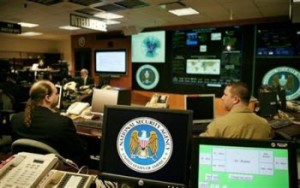
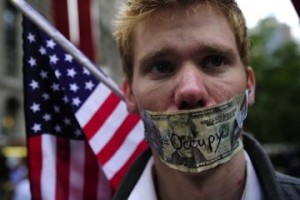





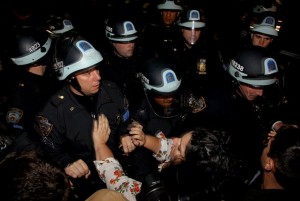
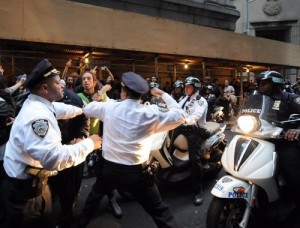
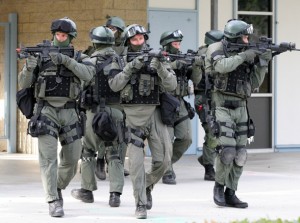








 sending...
sending...